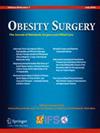比较机器人和腹腔镜减肥手术的吻合口漏率:代谢和减肥手术认证和质量改进计划(MBSAQIP)数据库研究。
IF 2.9
3区 医学
Q1 SURGERY
引用次数: 0
摘要
在MBSAQIP数据库对超过56万例减肥手术的研究中,吻合口漏的总发生率为0.21%。机器人袖胃切除术(SG)与腹腔镜入路相比,漏率明显更高。机器人和腹腔镜Roux-en-Y胃旁路术或十二指肠开关术的泄漏率无显著差异。术前前肠手术和术中引流管放置与所有手术中泄漏风险增加独立相关。本文章由计算机程序翻译,如有差异,请以英文原文为准。
Comparing Anastomotic Leak Rate Between Robotic and Laparoscopic Bariatric Procedures: A Metabolic and Bariatric Surgery Accreditation and Quality Improvement Program (MBSAQIP) Database Study.
In this MBSAQIP database study of over 560,000 bariatric procedures, the overall incidence of anastomotic leaks was 0.21%. Robotic sleeve gastrectomy (SG) was associated with a significantly higher leak rate compared to the laparoscopic approach. No significant differences in leak rates were observed between robotic and laparoscopic techniques for Roux-en-Y gastric bypass or duodenal switch. Prior foregut surgery and intraoperative drain placement were independently associated with increased risk of leak across all procedures.
求助全文
通过发布文献求助,成功后即可免费获取论文全文。
去求助
来源期刊

Obesity Surgery
医学-外科
CiteScore
5.80
自引率
24.10%
发文量
567
审稿时长
3-6 weeks
期刊介绍:
Obesity Surgery is the official journal of the International Federation for the Surgery of Obesity and metabolic disorders (IFSO). A journal for bariatric/metabolic surgeons, Obesity Surgery provides an international, interdisciplinary forum for communicating the latest research, surgical and laparoscopic techniques, for treatment of massive obesity and metabolic disorders. Topics covered include original research, clinical reports, current status, guidelines, historical notes, invited commentaries, letters to the editor, medicolegal issues, meeting abstracts, modern surgery/technical innovations, new concepts, reviews, scholarly presentations and opinions.
Obesity Surgery benefits surgeons performing obesity/metabolic surgery, general surgeons and surgical residents, endoscopists, anesthetists, support staff, nurses, dietitians, psychiatrists, psychologists, plastic surgeons, internists including endocrinologists and diabetologists, nutritional scientists, and those dealing with eating disorders.
 求助内容:
求助内容: 应助结果提醒方式:
应助结果提醒方式:


